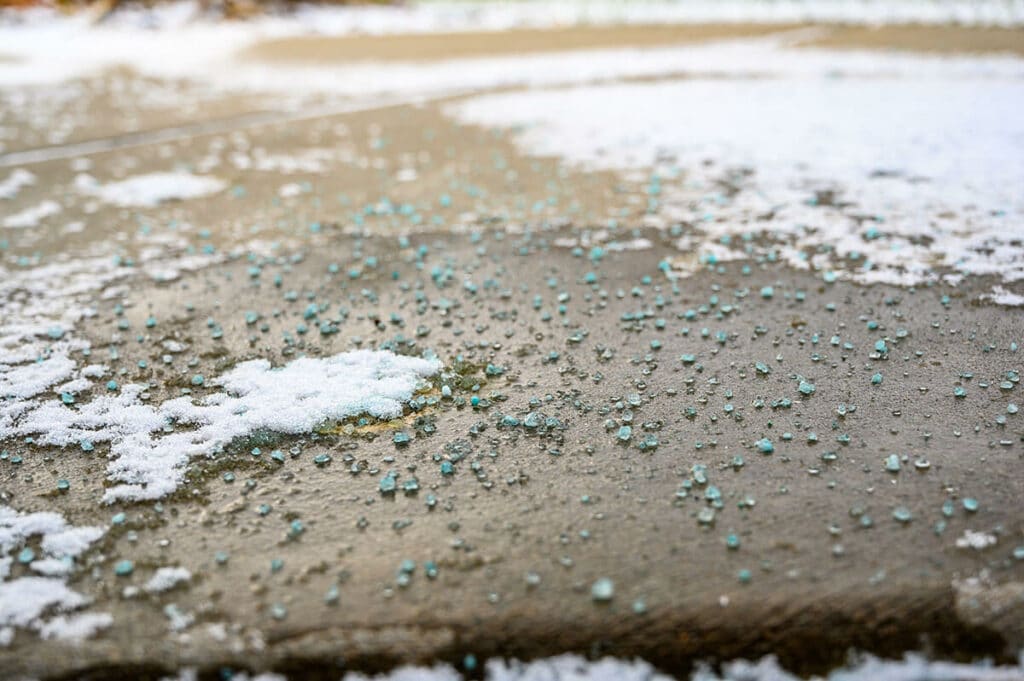
Living near the coast has undeniable perks — stunning views, sea breezes, and relaxing beachside ambiance. But it also comes with a major downside: salt buildup on your home’s exterior surfaces. This salt, carried in the air and deposited by wind and waves, can accumulate on siding, windows, decks, and driveways. Over time, it leads to corrosion, staining, and premature wear.
So the big question is: Can pressure washing remove salt buildup from coastal homes?
Absolutely. ✅ With the right method and precautions, pressure washing is one of the most effective ways to eliminate salt deposits and protect your property from coastal damage.
Let’s explore how it works, what to avoid, and when it makes the most sense to call in a professional. 🧼🏡
🧂 Why Salt Buildup Is a Problem Near the Coast
Salt doesn’t just sit there harmlessly — it’s highly corrosive and damaging over time. Here’s what it can do:
- Eats away at paint and finishes
- Stains siding and windows with white or gray crust
- Accelerates rust on metal fixtures and railings
- Degrades wood fibers in decks and fences
- Leaves concrete pitted and discolored
What’s more, salt is hygroscopic, meaning it attracts and retains moisture. This sets the stage for mildew, moss, and faster deterioration of exterior materials. 🌧️🌱
🧼 Why Pressure Washing Works So Well on Salt
Pressure washing is ideal because it combines force and volume to:
✅ Break apart salt crystals
✅ Rinse off buildup from porous surfaces
✅ Flush out salt embedded in siding cracks and joints
✅ Clean hard-to-reach spots (eaves, trim, under decking)
Hoses or buckets simply won’t generate enough pressure or coverage to get the job done. Pressure washers — especially with proper nozzles and attachments — can fully restore your coastal surfaces to their pre-salt condition.
Browse Amazon Here For Pressure Washers And Accessories
💧 How to Pressure Wash Salt Buildup Safely
Here’s a step-by-step method that works great for homes in salty environments:
1. Start With a Rinse 🚿
Use a wide-angle nozzle (40°) to gently rinse surfaces with low to moderate pressure. This knocks off loose salt without blasting it deeper into crevices.
2. Use a Mild Detergent or Salt Neutralizer 🧴
Regular detergents can help break down stubborn buildup, but salt-specific neutralizers (available at hardware or marine supply stores) are even better. These reduce the corrosive charge of salt and make it easier to rinse away.
Let the solution dwell for 5–10 minutes before rinsing.
3. Use Moderate PSI (1500–2500) 💪
Stick with moderate pressure to avoid damaging paint or seals. Higher PSI can force salt into porous materials or cause unnecessary wear.
4. Work From Top to Bottom ⬇️
Always start at the top of your siding or surface and work downward. This helps avoid streaks and ensures even coverage and rinse.
5. Don’t Forget Metal Fixtures and Trim ⚙️
Use lower pressure or a soft wash method for metal railings, outdoor light fixtures, and hardware. These parts are especially vulnerable to salt corrosion and may benefit from an added coat of rust inhibitor post-wash.
6. Rinse With Clean Water 💦
After detergent or neutralizer is applied and pressure washed off, always do a clean water rinse to remove remaining residues. This step is essential to prevent re-depositing salt as the surface dries.
⚠️ Caution: Don’t Skip These Safety Tips
- Protect windows and vents — avoid directing water at seals and openings
- Avoid mixing cleaners unless the label says it’s safe
- Test a small area before using pressure on painted or aged surfaces
- Be mindful of landscaping — runoff from salty residue can harm plants
🧪 Salt-Sensitive Surfaces That Need Extra Care
Some materials around your home are especially vulnerable to salt damage. These include:
- Aluminum siding or trim (pits and corrodes easily)
- Wood decking (dries out and flakes faster)
- Natural stone (salt can cause efflorescence)
- Window screens and frames (metal frames rust quickly)
In these cases, soft washing with lower pressure and salt-neutralizing agents may be a better choice than aggressive blasting.
🏠 How Often Should You Pressure Wash Near the Coast?
If you live within a few blocks of the ocean, the general rule is:
- 2–4 times per year for siding, railings, and windows
- Once per month for decks, patios, and driveways during salt-heavy seasons
- Immediately after a tropical storm or period of high salt air
Routine cleaning protects your investment and keeps everything looking sharp — not chalky and corroded. 🧽✨
🧑🔧 When to Hire a Pro
Salt buildup removal near coastal homes may warrant calling a professional if:
- Your surfaces are delicate or historical
- You’re unsure of the correct cleaner or PSI
- You don’t have a washer with salt-neutralizing soap injection
- You want preventative sealing or rust-inhibiting treatments applied afterward
Professionals will also know how to control runoff, ensuring nearby plants or grass don’t suffer from salty discharge.
🌱 Environmentally Friendly Practices
Pressure washing salty surfaces can send brine-laced runoff into storm drains and sensitive ecosystems. Here’s how to reduce environmental impact:
- Use biodegradable salt neutralizers
- Divert or contain runoff when possible
- Avoid washing directly near dunes, marshes, or ocean outfalls
- Sweep up dry salt before applying water to minimize waste
✅ Final Take: Pressure Washing Is a Must for Coastal Salt Cleanup
Living near the coast is a dream, but salt buildup is the price you pay for oceanfront beauty. Thankfully, pressure washing is a fast, effective, and safe solution to remove corrosive salt deposits and keep your property in top shape.
Just remember:
✔️ Use the right pressure and detergent
✔️ Rinse thoroughly
✔️ Treat sensitive surfaces with care
✔️ Clean regularly to prevent damage
With the right approach, your coastal home can stay looking fresh and protected for years to come — no matter how salty the sea breeze gets. 🌬️🌊🏡






